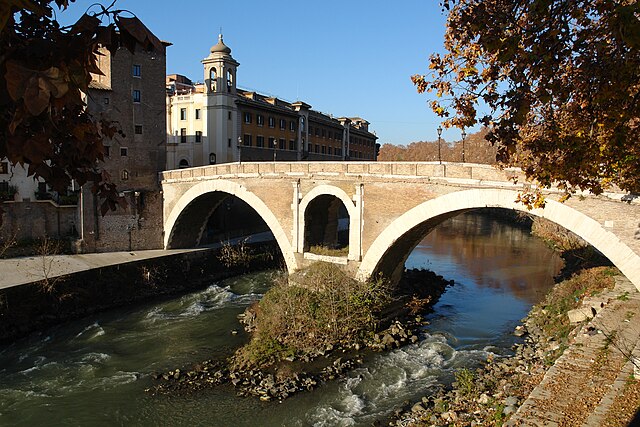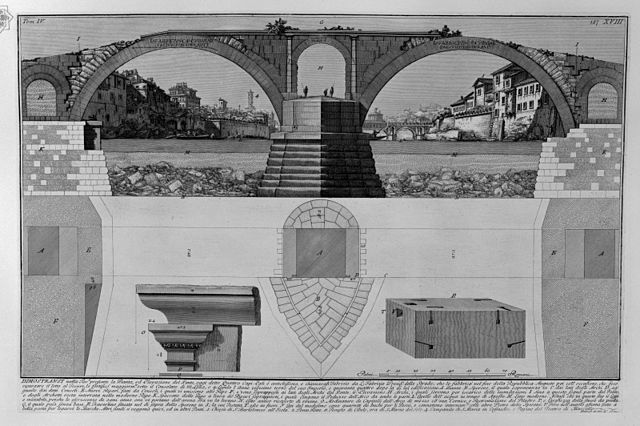The Pons Fabricius or Ponte dei Quattro Capi, is the oldest Roman bridge in Rome, Italy, still existing in its original state. Built in 62 BC, it spans half of the Tiber River, from the Campus Martius on the east side to Tiber Island in the middle. Quattro Capi refers to the two marble pillars of the two-faced Janus herms on the parapet, which were moved here from the nearby Church of St Gregory in the 14th century.
The Pons Fabricius in 2008
Pons Fabricius as it appears in a Piranesi engraving of 1756
Pons Fabricius and Tiber island as seen from the Tiber river walkway
The ancient Romans were the first civilization to build large, permanent bridges. Early Roman bridges used techniques introduced by Etruscan immigrants, but the Romans improved those skills, developing and enhancing methods such as arches and keystones. There were three major types of Roman bridge: wooden, pontoon, and stone. Early Roman bridges were wooden, but by the 2nd century stone was being used. Stone bridges used the arch as their basic structure, and most used concrete, the first use of this material in bridge-building.
Puente Romano, Mérida, the world's longest (still in use) surviving Roman bridge
Pons Aemilius, the oldest stone bridge in Rome
Ponte Sant'Angelo
Pons Aemilius







